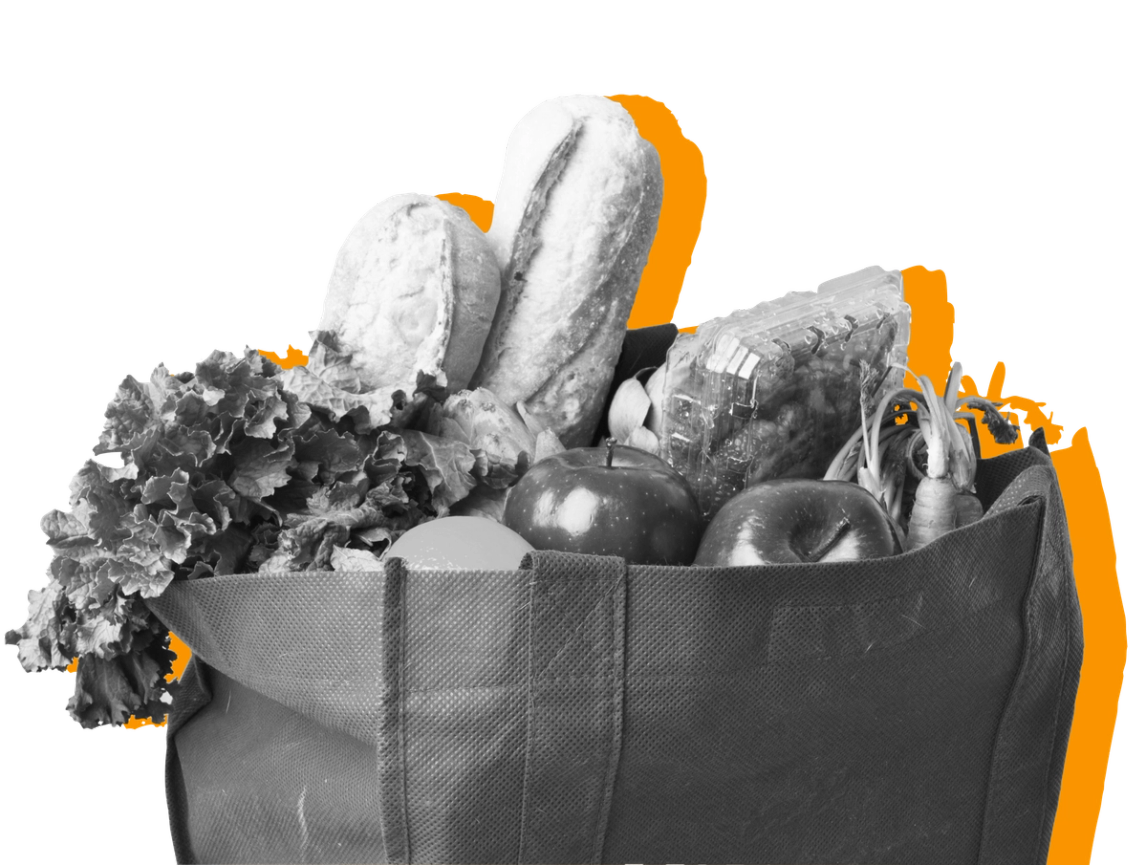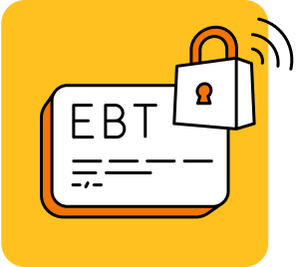
- Understanding the 2024 SNAP increase
- 2024-2025 SNAP benefit amounts
- How much do you get for one person on SNAP?
- Were food stamps cut in 2024?
- Did SNAP asset limits change in 2024?
- Did SNAP work requirements change in 2024?
- What is the SNAP income limit as of 2024?
- How much will SNAP benefits increase in 2025?
Table of contents
- Understanding the 2024 SNAP increase
- 2024-2025 SNAP benefit amounts
- How much do you get for one person on SNAP?
- Were food stamps cut in 2024?
- Did SNAP asset limits change in 2024?
- Did SNAP work requirements change in 2024?
- What is the SNAP income limit as of 2024?
- How much will SNAP benefits increase in 2025?
The Supplemental Nutrition Assistance Program (SNAP) provides monthly food assistance to households across all 50 states, Washington D.C., and U.S. territories through EBT cards that you can use at participating stores and even at select restaurants for certain people.
Starting October 2024, some SNAP participants will see changes to their benefits (also called EBT or food stamps). Here's what you need to know if you’re eligible for or already getting SNAP.

Propel is the #1-rated EBT balance checking app
Understanding the 2024 SNAP increase#understanding-the-2024-snap-increase
Each year on October 1, SNAP benefits change for some people due to the Cost of Living Adjustment (COLA). This annual adjustment helps benefits keep pace with food prices and inflation. By bumping up some deductions in your SNAP calculation, the COLA can cause benefits to either increase or decrease based on how the economy is doing.
In 2024, the maximum SNAP benefit amount increased slightly. Though food prices in August 2024 were about two percent higher compared to the previous year, the 2024 increase was smaller than the 2023 adjustment.
The 2024 SNAP COLA increase did not raise the minimum SNAP benefit. That remains $23 for most one- and two-person households across the country.
Minimum SNAP allotments (October 1, 2024 to September 30, 2025)#minimum-snap-allotments-october-1-2024-to-september-30-2025
| State/Area | Household Size | Minimum SNAP allotment |
|---|---|---|
| 48 States & DC | 1-2 | $23 |
| Guam | 1-2 | $35 |
| U.S. Virgin Islands | 1-2 | $30 |
| Alaska (Urban) | 1-2 | $30 |
| Alaska (Rural 1) | 1-2 | $39 |
| Alaska (Rural 2) | 1-2 | $47 |
| Hawaii | 1-2 | $41 |
Research shows that the Thrifty Food Plan, which determines SNAP benefit amounts and the annual COLA, does not accurately reflect current food costs. As a result, even with annual increases, benefits often fall short of monthly household needs.
2024-2025 SNAP benefit amounts#2024-2025-snap-benefit-amounts
Unfortunately, the maximum benefit amounts for a zero income, one-person household only increased by $1.00 in 2024.
As of October 1, 2024, here are the maximum monthly SNAP benefits for anyone in the 48 contiguous states and D.C.:
- 1 person: $292
- 2 people: $536
- 3 people: $768
- 4 people: $975
- 5 people: $1,158
- 6 people: $1,390
- 7 people: $1,536
- 8 people: $1,756
- Each additional person: Add $220
Maximum SNAP benefits are different in Alaska, Hawaii, and U.S. territories due to higher food costs. A family of four in Hawaii can receive up to $1,723 per month and a family of four in Alaska can receive up to $1,953 per month.
Remember: Only about 36% of SNAP households receive the maximum amount. Some one- and two-person households only get $23 per month, which is the minimum possible benefit. Your actual benefit depends on your income, allowable deductions, and household size.
How much do you get for one person on SNAP?#how-much-do-you-get-for-one-person-on-snap
For one person, the maximum monthly SNAP benefit is now $292. Most people will receive less than that. Your actual benefit amount depends on:
- Your state
- Your income and assets (in some states)
- Housing costs
- Utility expenses
- Medical expenses (for seniors and people with disabilities)
Were food stamps cut in 2024?#were-food-stamps-cut-in-2024
No, SNAP benefit amounts actually increased in 2024. Your monthly benefits may still have gone down if:
- Your income increased (like if you started a new job)
- Your household changed (like if someone moved out)
- Your housing or medical costs decreased
SNAP looks at your recent monthly income to determine eligibility, not your annual earnings. You may still qualify even if your income is higher in most months. Report any sudden income changes to your local SNAP office. Big income increases could reduce your benefits or affect your eligibility—and income decreases could increase your benefits.
Want to learn more about SNAP eligibility?
Check out our detailed guide to qualifying for food stamps.
Did SNAP asset limits change in 2024?#did-snap-asset-limits-change-in-2024
Only 13 states have asset limits for SNAP, which are restrictions on the maximum amount of money a household can have access to and still be eligible for benefits.
When it comes to SNAP, “assets” generally include things like bank accounts (checking and saving) and other money that is available to you to use on food. Things that you can't really access for spending money, like retirement accounts or vehicles, aren’t counted as assets in most cases.
In October 2024, the asset limit increased to $4,500 for households with people who have disabilities or are age 60 or older and $3,000 for all other households. This change applies to the following states:
- Alaska
- Arkansas
- Kansas
- Mississippi
- Missouri
- South Dakota
- Tennessee
- Utah
- Wyoming
These states have their own asset limits for SNAP:
- Idaho ($5,000)
- Indiana ($5,000)
- Nebraska ($25,000 in liquid assets)
- Texas ($5,000)
Did SNAP work requirements change in 2024?#did-snap-work-requirements-change-in-2024
Starting October 2024, there are important changes to work requirements under the Fiscal Responsibility Act, legislation that Congress passed in 2023:
Adults without disabilities between the ages of 52 and 54 who don’t have dependents must now meet work requirements to receive benefits for more than three months over a three-year period. This includes working 80 hours monthly, participating in qualifying education programs, or job training.
Previously, these requirements only applied to those ages 18 to 52.
You may be exempt from work requirements if you:
- Do not have stable housing
- Are a veteran
- Are age 18-24 and aged out of foster care
- Cannot work due to physical or mental limitations
- Are pregnant
- Have a child under 18 in your household
What is the SNAP income limit as of 2024?#what-is-the-snap-income-limit-as-of-2024
Income thresholds for SNAP eligibility changed for 2024, and limits were lower than the previous year. Your household must meet both gross and net income tests to qualify.
“Gross income” is how much money you make before taxes are taken out. “Net income” is how much money you make after taxes are taken out. The gross income test counts all income, including what you bring in from work, retirement benefits, and child support. The SNAP net income test includes deductions for rent, utilities, medical and child expenses and considers whether income is earned (from work) or unearned (not from work).
Gross income limits are different in each state. There are also different income rules for households with seniors, people with disabilities, or mixed immigration statuses.
How much will SNAP benefits increase in 2025?#how-much-will-snap-benefits-increase-in-2025
The 2024 SNAP benefits increase will affect your 2025 payments too. The next COLA adjustment will occur in October 2025. Future changes will depend on food costs and inflation during the 2024-2025 fiscal year (the federal government’s fiscal year usually goes from October 1 through September 30 of the following calendar year).








